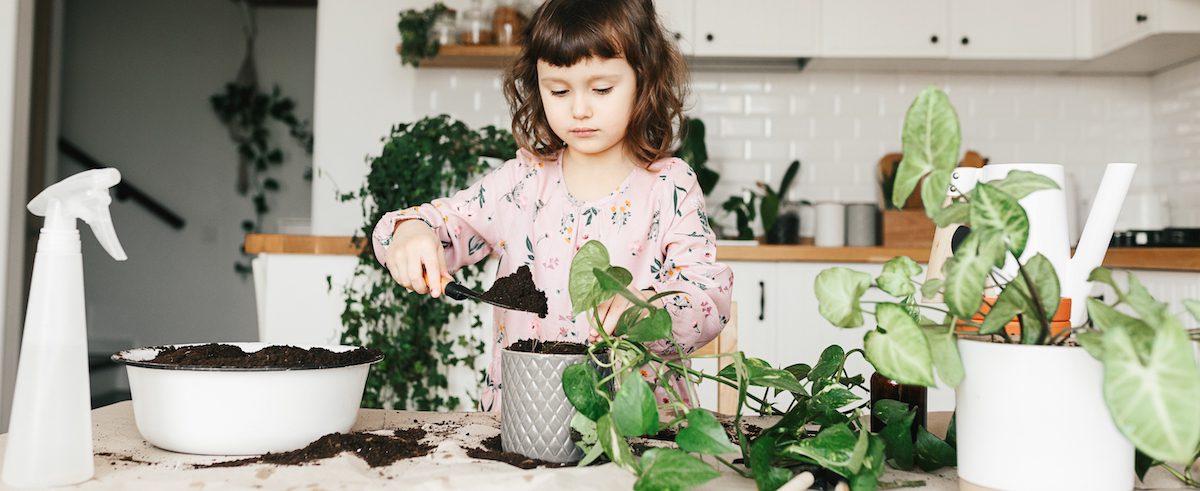If you ask any gardening expert what the best plant for the beginner gardener is, they will always suggest the pothos. There are a host of reasons for this. For one, they are easy to maintain and inexpensive, and secondly, they are so versatile and come in a range of variants and colors. The humble pothos is perfect for indoor and outdoor use and is used regularly by interior designers and garden landscapers as a means to ass color, character, or life to a space.
This article looks to provide you, whether you are a beginner or an expert, with a summary on what a pothos plant is, practical care tips, and a list of 10 of the best pothos varieties that you can add to your garden today to make it stand out.
Table of Contents
What is a Pothos Plant?
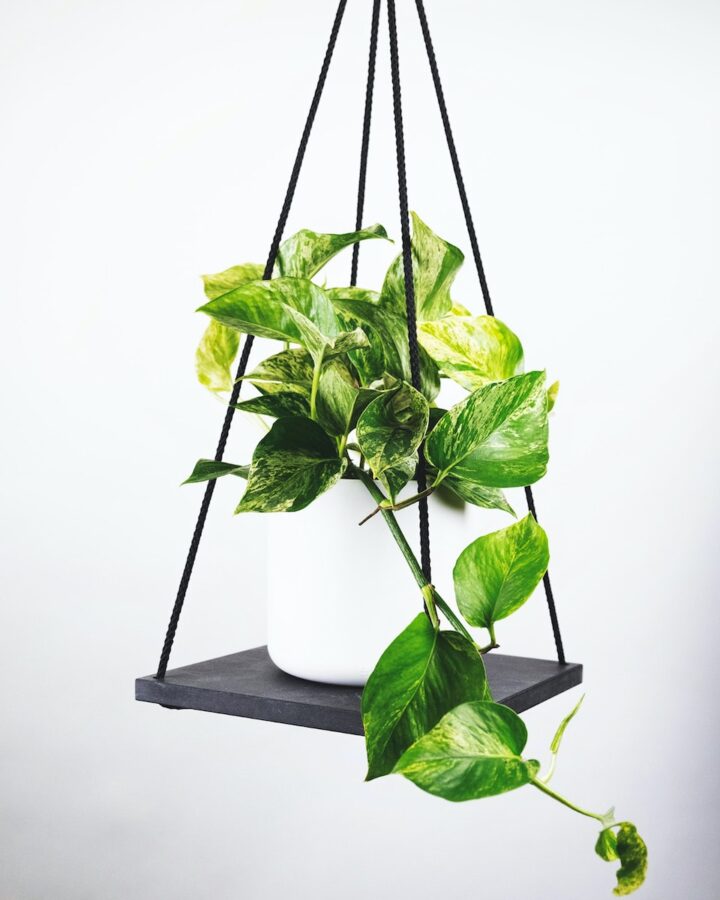
A pothos is a tropical vine plant that comes in many shapes, sizes, and colors. The stems are usually very long, and the leaves are heart-shaped. They are evergreen and can be grown both indoors and outdoors.
The pothos particularly shines in an outdoor setting, where through using hanging baskets, moss poles, or spreading across tables, you can add real beauty to your outdoor area.
There are no hybrids of the pothos and most of the pothos variants are Epipremnum aureum. Many variants can look quite similar in spite of having different names, so in this article, we will look to make the distinction between certain types a little clearer.
Practical Tips on How to Care for your Pothos
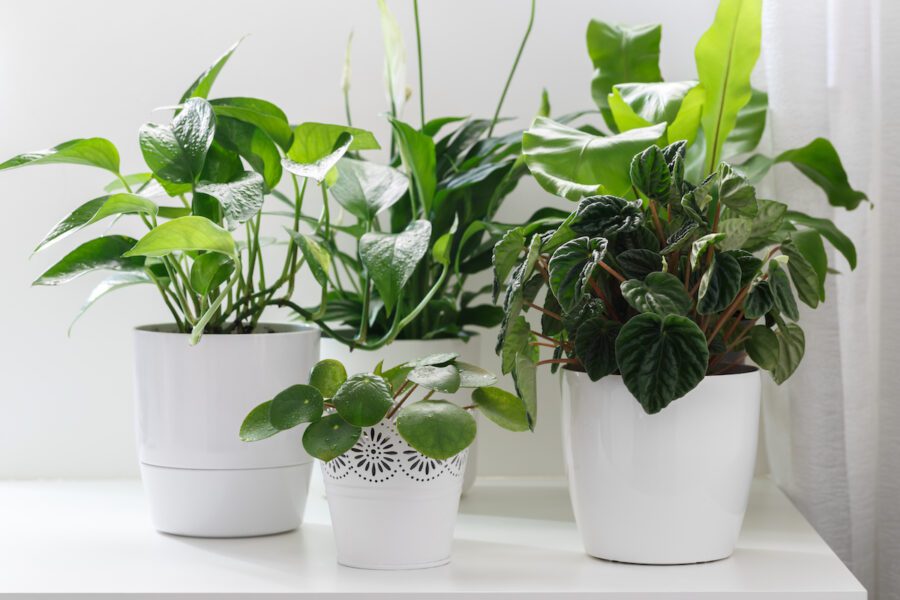
Although the pothos is easier to care for than many other plants, many things should be considered when looking to care for your plant and keep it healthy. For one, having a good, diluted fertilizer on hand to feed the plant once every 4 weeks will keep it healthy. You will not need to feed it during the winter months but feeding it from March to September will be enough.
Secondly, giving the plant sufficient light that is indirect will encourage a faster growth pattern. Using direct sunlight on the plant will only scorch the leaves. Another way to care for your plant is through a method known as pruning. This is simply the trimming away of the dead leaves to keep the plant healthy. The best time to do this is typically in the spring before the growth period starts.
Jade Pothos
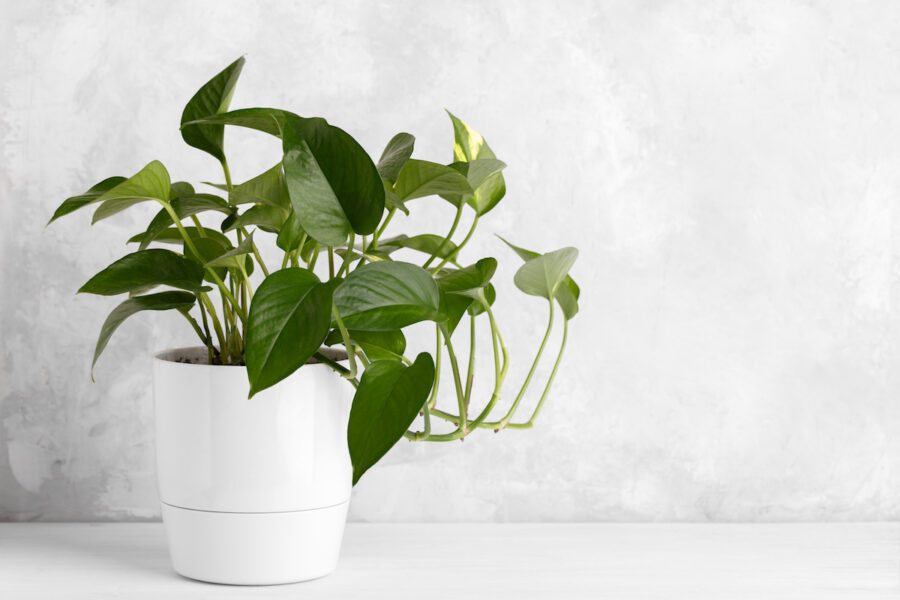
Probably the most popular plant on the list, the Jade Pothos is a cracking addition to any home or garden. Since it’s so easy to care for, this is a very popular type of pothos for beginner gardeners to have. It’s commonly called Devil’s Ivy, and you can easily prune the dense foliage to create a very attractive houseplant for your table. Stems can be up to three feet long and it works well in both bright light and shade, so you are not restricted on where you can place it. The one thing to note is that it tends to grow better in more humid conditions, so while you can have it anywhere, placing the plant in a more humid room like the bathroom is the best idea.
Golden Pothos
This is one of the most popular types of pothos available on the market and many people like putting it in hanging baskets because it is easy to find, easy to manage, inexpensive, and has bright, lime-colored leaves with yellow streaks. It is popular as a houseplant because it does very well in low light conditions without fading yellow. Similarly, it is ideal for small and large gardens as it can grow to 25-30 feet. One thing to be aware of is that although you will not need to feed it in the winter, you should keep the soil from going too dry or else the plant may go dormant or die.
Neon Pothos
The neon pothos gets its name from the beautiful bright green leaves that it has. They are perfect in hanging baskets and will add a pop of color and light to any garden. The key to the maintenance of this plant is keeping the water clean. When you plant it in water, make sure that the water is clean, and look to add clean water to it every once in a while.
Marble Queen Pothos
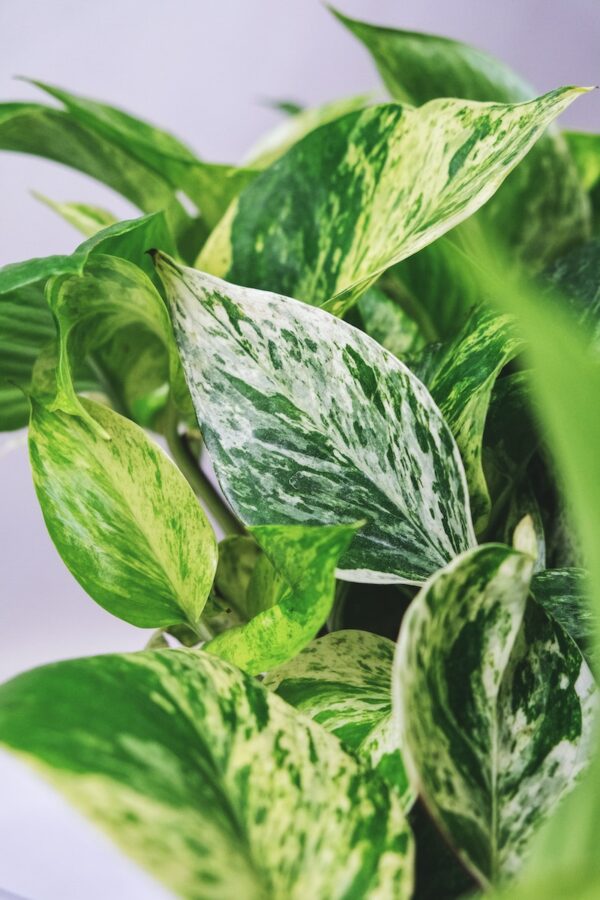
The Marble Queen pothos is a common plant that needs little maintenance to keep it healthy. As is the case with most pothos on the list, it looks best in a hanging basket, but it also shines when going up a wall. One thing to note is that due to the deep variegation on the leaves with the contrasting colors, you’ll put this plant in indirect but bright sunlight. It won’t tolerate low light conditions well. It has a slow rate of growth, but that makes maintenance easier. However, be sure to keep the soil moist, particularly in the growing season.
Snow Queen Pothos
Snow Queen pothos is easily characterized by the stunning white markings on the leaves, very much like Marble Queen Pothos. The only difference being the snow queen has more pronounced white variegation whereas the marble pothos has a paler hue. The snow queen is my favorite because it has such a simple and elegant look to it. Outdoors can grow up to 20-25 feet, and indoors, if maintained and trimmed properly, will cap at about 4-6 feet.
Hawaiian Pothos
The Hawaiian pothos has huge leaves on it compared to other hanging pothos plants, and you’ will also get very dark green foliage on it, so it is the opposite of the bright and vibrant Neon pothos. There are small specks of bright yellow variegation that stand out nicely against the dark green of the leaves, making for a nice contrast. Some key points with this pothos are that the leaves should be kept clean and dust-free, the plant should be in a place with indirect sunlight, and you should look to plant it somewhere humid to encourage faster growth too.
Manjula Pothos
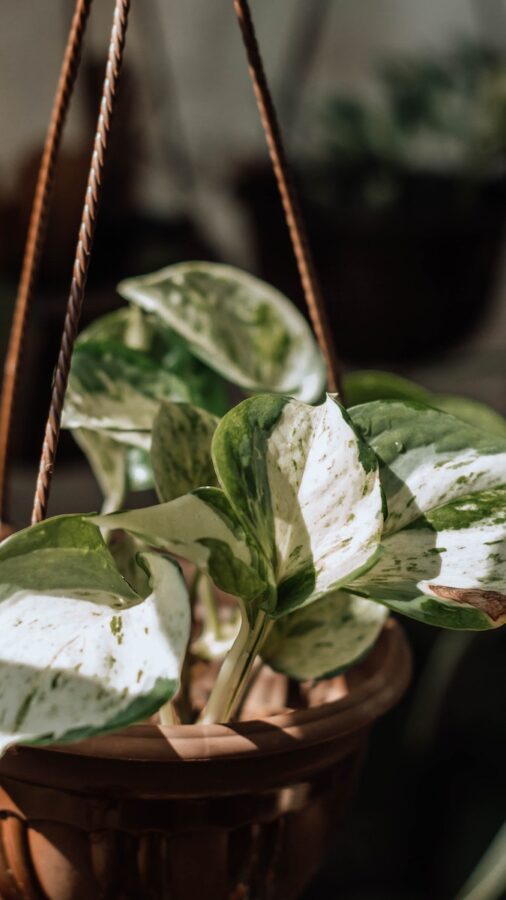
With a stunning mix of green and cream in its leaves, the Manjula pothos is another hard variant to get your hands on. Some versions of the Manjula will even have a marbled look and this can be very appealing to collectors or decorators. It requires a little more maintenance and maybe some more feeding as the leaves are unique and should get plenty of indirect light, but the effort is worth it with this one.
Jessenia Pothos
The Jessenia pothos is one of the newer pothos varieties on the market, but due to its gorgeous green and yellow mix, it has become an eye-catching variant that is used in many gardens. You can put this type of pothos in a hanging basket or container without an issue, but you do want to make sure both of them drain well. It won’t do well in lower light conditions either, so be sure to keep it somewhere that there is enough indirect sunlight to allow it to grow.
Cebu Blue Pothos
When it comes to the Cebu Blue variant, its elongated heart-shaped leaves set it apart from other varieties that have shorter leaves. This plant also comes with a very pretty silvery-blue foliage that has a glossy look to it, and you’ll get a host of exciting vein patterns with this plant that add even more visual interest and texture to it. This makes it an excellent option for those looking to add something a little different to their garden.
This type of pothos is best planted in an area that gets indirect, bright sunlight. So you can plant it outdoors, but it also works well indoors too. You will have to keep the humidity levels higher with it, but you can do this by adding a saucer filled with rocks and water directly below the plant. You should water it enough to keep the soil slightly moist but not saturated, and beware not to overwater it or you could risk giving it a fungal infection.
Harlequin Pothos
The Harlequin pothos is the rarest pothos you can find. It looks a lot like Manjula and looks like a mix of marble and snow queen pothos with a little more variegation on the leaves. Its eclectic mix of colors makes it very sought after and with an indoor length of about 2-5 feet, it is great for indoor use and outdoor use. If you truly want to enhance its beauty, it will stand out even more if paired with jade or silver pothos.

